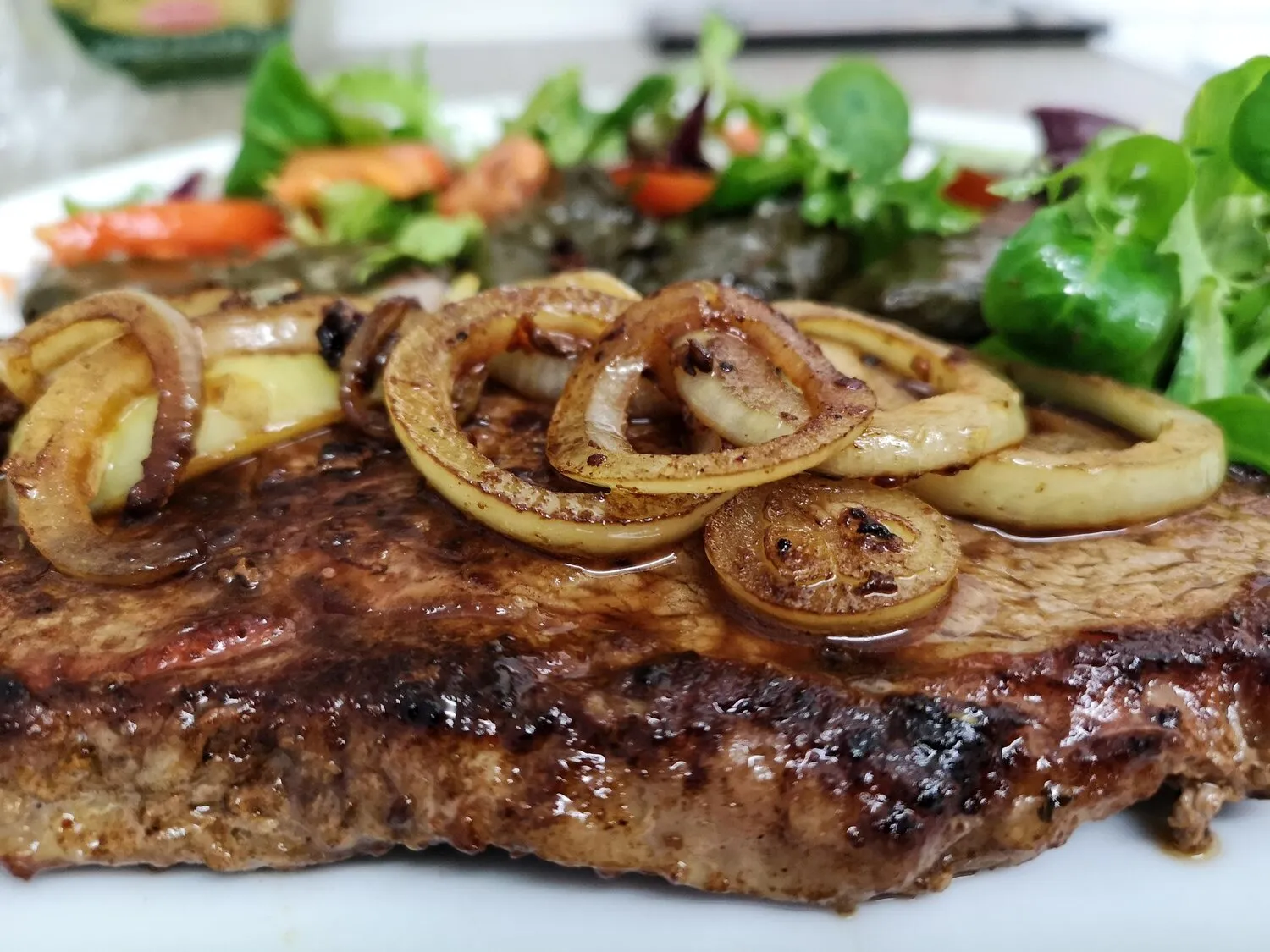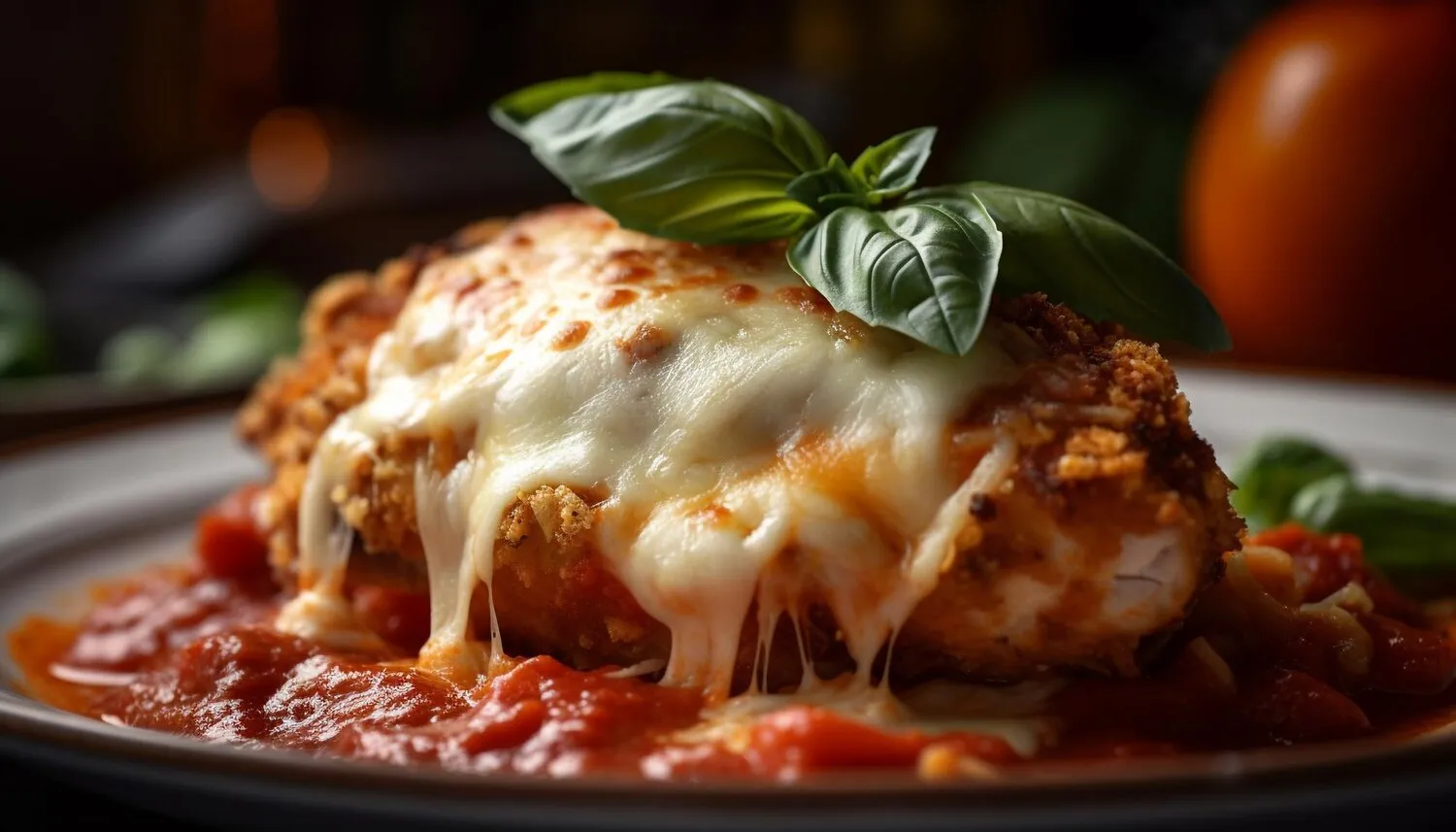
Bife Acebolado
Steak topped with onions, served with rice and beans.
Nutrition Facts
* The % Daily Value (DV) tells you how much a nutrient in a serving of food contributes to a daily diet. 2,000 calories a day is used for general nutrition advice.
Bife Acebolado, like many Brazilian dishes, reflects a blend of indigenous, African, and European culinary influences. The Portuguese introduced cattle and onions to Brazil, which became staples. The simplicity of the dish suggests its origins in everyday home cooking, adapting readily available ingredients.
Bife Acebolado is a deeply ingrained comfort food in Brazilian culture, representing a simple yet satisfying meal often enjoyed at home or in casual restaurants.
Everyday Meal
Bife Acebolado is a common everyday dish, frequently prepared for lunch or dinner. It's not typically considered a special occasion meal.
Home Cooking
The dish is strongly associated with home cooking, evoking feelings of warmth, family, and tradition. It's a dish often passed down through generations.
Lanchonetes and Restaurants
Bife Acebolado is also readily available in lanchonetes (snack bars) and casual restaurants throughout Brazil, offering an affordable and quick meal option.
Regional Variations
While the basic recipe remains consistent, there might be slight regional variations in the type of beef cut used or the addition of other vegetables like bell peppers.
Bife Acebolado features savory, beefy flavors complemented by the sweetness of caramelized onions. The simple seasoning allows the natural flavors of the ingredients to shine.
The dominant flavor is savory beef, typically from a cut like sirloin or round steak. The onions are cooked until softened and caramelized, providing a sweet and slightly pungent counterpoint. Garlic, if used, adds another layer of savory depth. Black pepper and salt are the primary seasonings, enhancing the existing flavors rather than masking them. The rice and beans, often served alongside, offer complementary textures and earthy undertones.
Steak Tenderness
Pounding the steak thinly before cooking helps to tenderize it and allows it to cook quickly and evenly. Marinating the steak briefly can also enhance tenderness and flavor.
Onion Caramelization
Cook the onions over medium-low heat to allow them to caramelize slowly, bringing out their natural sweetness. Don't rush the process; patience is key.
Don't overcrowd the pan
Cook the steak in batches if necessary to avoid overcrowding the pan, which can lower the temperature and prevent proper searing.
Rest the meat
Let the steak rest for a few minutes after cooking before slicing it against the grain. This allows the juices to redistribute, resulting in a more tender and flavorful steak.
Explore additional Classic Dish dishes and restaurants
Explore Classic DishDiscover top dining spots and culinary experiences in Rio Preto.
Explore Rio PretoLearn more about the food culture, restaurant scene, and culinary heritage of Brazil.
Explore Brazil
